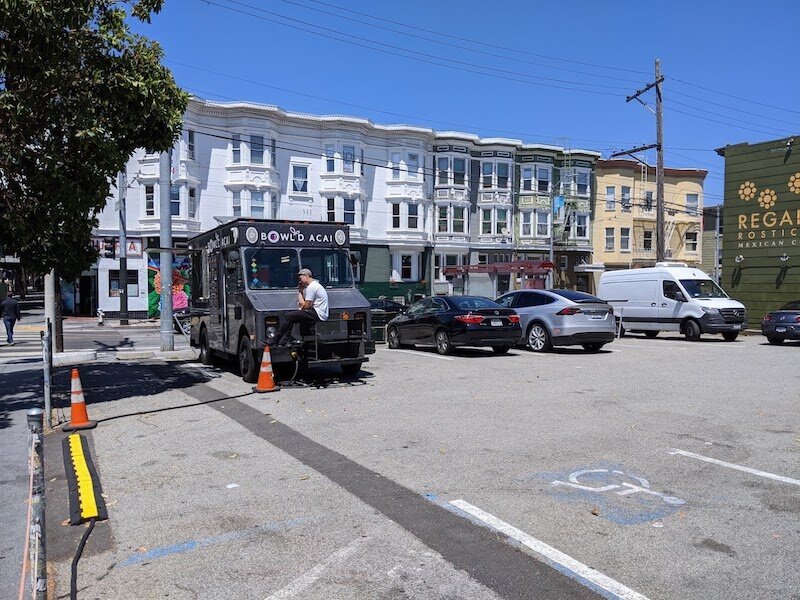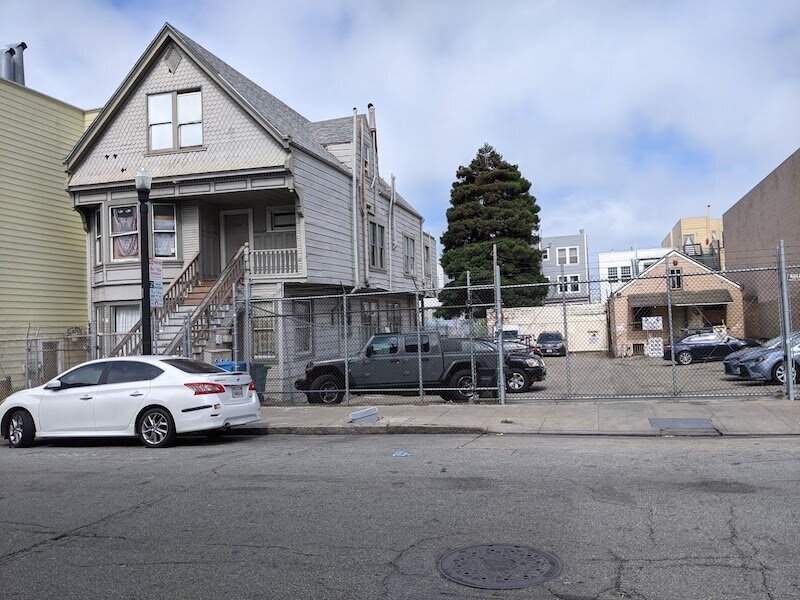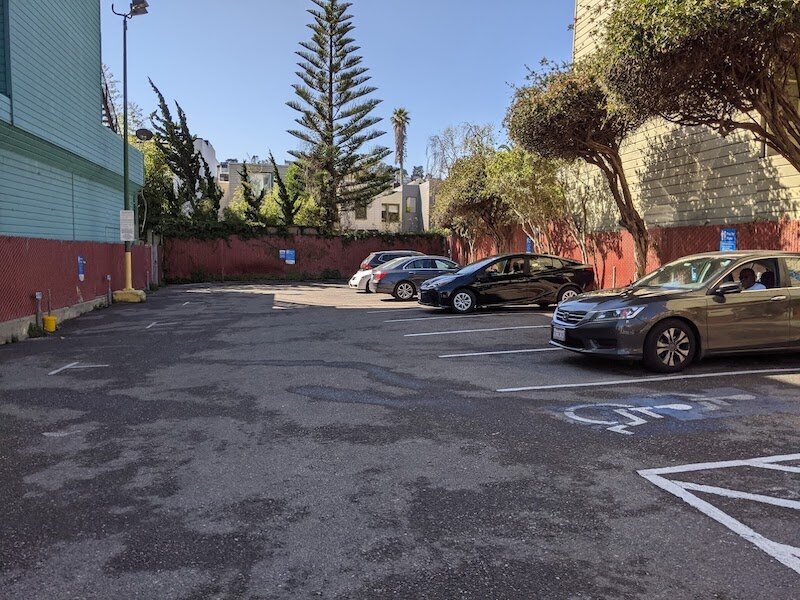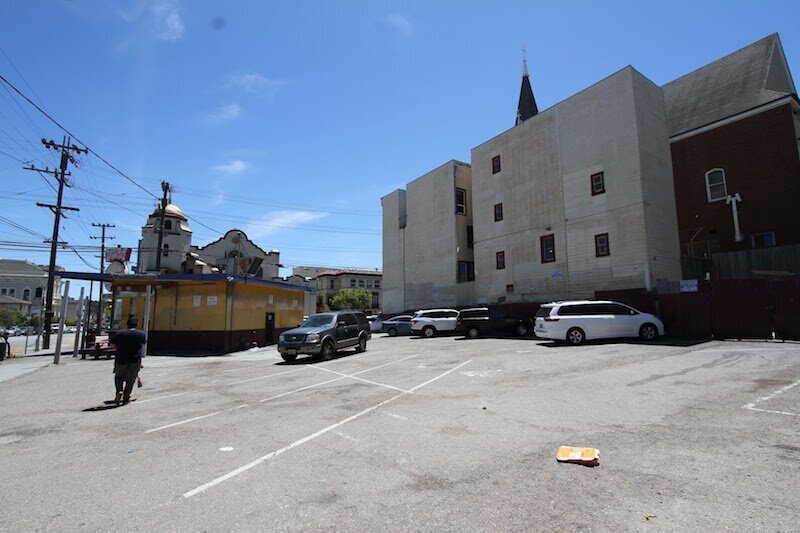Grandpa’s Basement House
This article was originally published on Strong Towns member Johnny Sanphillippo’s blog, Granola Shotgun. It is shared here with permission. All images for this piece were provided by the author.
My mother-in-law was born in a small town in rural Nebraska in 1941. Her father was overseas fighting World War II for the first few years of her life, so she and her mother lived on her grandparents’ farm in a society absent of young men. When her father returned home after the war, he took a job at the post office and set about building a home for the family, which quickly included three more children. In those early days the lawn was actually a highly productive vegetable garden that generated enough surplus in summer and fall to be put away for winter and spring. People raised on farms had all the required construction and preservation skills to provide for their own essentials. Critically, our institutions generally didn’t offer much resistance.
The late 1940s were a transitional period when the old iterative ad hoc era was coming to an end, but the mass-produced, Levittown version of suburbia hadn’t yet emerged. People were still operating largely under the previous development model of incremental modest self-built homes that grew and evolved over time. The “minimum viable product” concept was alive and well. Land was purchased with cash. The basement was constructed first, also on a cash basis, and fit with a bare bones kitchen and bath. That space was occupied for a few years until more cash could be pulled together to build the ground floor. In time there might be a second above ground story as well as horizontal additions. To the extent that there was any debt associated with any of this work, it was short term and typically borrowed from family or friends. Most of the work was done by the homeowners themselves.
Next door the neighbors had clearly taken the same path with their property. Today, just about every part of this plan is illegal, culturally unacceptable, and economically unwieldy in most locations. These basement homes are too small to be approved by local authorities. Minimum square footage requirements have been put in place to filter out the riffraff who can’t afford larger homes. Most municipal codes insist on two off-street covered parking spaces which, in this case, would be the same size and likely the same cost as the homes themselves. Growing vegetables on what should be a lawn is verboten in many locations, if not by the government than by private association bylaws. And building anything in stages is frowned upon, since the present custom is to create a finished product all at once and never change any part of it without interacting with a host of special committees and review boards. I have no doubt that the four children, now in their 70s and 80s, who spent their early years in the basement house would never tolerate such activity in their own neighborhoods today. It’s just too trashy and sets the wrong tone.
But here we are seventy odd years later and neither of these homes have ever received their upper floor additions. I asked why and was told that by the 1950s it was clear that the national economy had re-centered away from agriculture and small farm towns to a handful of big cities. The basement house was sold for about what it cost to build, the family packed up their belongings, and they moved to the coast: first to Seattle, then to Los Angeles. The old town never grew beyond that 1950 peak, and was actually lucky to avoid complete depopulation and abandonment, as was the case for many other rural settlements. No doubt, permanently half-finished homes like these were one of the reasons incrementalism was eventually outlawed.
I think about those basement homes in relation to the way my neighborhood here in San Francisco began. Back in the 1880s this part of the city was a distant suburb far from downtown. Speculators sold off individual parcels to cash buyers with no paved roads or public infrastructure. The electric streetcar line was introduced in 1894 to add value to the territory by enabling fast commutes to civilization.
These are photos of the alley behind my building. The common practice when this neighborhood was first forming was for small cottages to be built at the back of the lot on a cash basis or very short-term, all-interest loans with a balloon payment after four or five years. When more funds could be pulled together and the value of the land increased, the owners would then construct a more substantial building in the front of the lot. My apartment, for example, is in a four-unit building facing the street while a two-story detached cottage faces the alley. In some cases, there was a third or fourth round of intensification where the first and second buildings were removed to make way for a much larger structure. This process continued right up until World War II.
I’m fond of “reading” the landscape to see how different parts of the city emerged over the decades. Here are a couple of old homes each with a two-story cottage in the back. In some cases, the cottages came first. In others, they were added later. This was completely normal and expected. Each new iteration was seen as progress and part of the natural improvement of the neighborhood. Notice the late 1800s clapboard cottage with the 1920s faux Spanish casita in the back. Remember, thirty-year government backed mortgages didn’t exist back then. These were the products of an entirely different development pattern and a fundamentally different economy and culture.
This is the Whiz Burger. When I was a lot younger and a whole lot poorer, I used to live a few doors down from this place. (The food is actually terrible. This is not a hidden local gem to be discovered. Never eat there unless you’re fully insured.) As the sign attests, the Whiz Burger was established in 1955. This was right around the time my mother-in-law’s family had settled into a new life in the suburbs of Seattle where her father owned and operated a gas station instead of farming corn in Nebraska. By then, absolutely everything about how we built, financed, and occupied the landscape had changed completely.
The value of land in places like San Francisco dropped so low during the mass exodus to the new suburbs that grand Victorian buildings were removed to make way for parking spaces. The Whiz Burger sits on two city lots, all of which are paved in asphalt. The building itself is about as cheap as a structure can be and still contain deep fryers and a walk-in refrigerator. Customers dine outdoors because there is no indoor seating, although this is hardly a Parisian sidewalk café. It was never meant to be that kind of place.
Instead, the Whiz Burger belongs to the lost world of American Graffiti and Mel’s Diner.
All around the city there are vacant lots where buildings once were. Squat, low-value, auto-oriented infrastructure sits next to older buildings from another era. Both the Victorians and the parking lots are remnants of earlier periods in the city’s evolution.
Today, land values are shockingly high in San Francisco and infill development is absolutely everywhere. One by one, the old parking lots, gas stations, and muffler shops are being transformed into new structures and uses. Current rules, regulations, cultural and political constraints, and the sheer cost of construction now favor a different version of urban development. In order to get the numbers to add up, the buildings need to be very large. The decade-long approval processes, the high cost of land, environmental remediation, multi-level parking decks, seismic engineering, fire suppression equipment, infrastructure upgrades, and so on all dictate a substantial building. There needs to be enough units to amortize all the upfront costs and service the debt.
I want you, dear reader, to set aside all the squirrelly feelings you may have about the political Left or Right. Perhaps you hate the evils of Big Government or the evils of Corporate Capitalism. Maybe you like cities. Maybe you don’t. Maybe you like the kinds of people who live in them. Maybe you don’t. Maybe you like places that are a bit messy. Maybe you need a place that’s orderly and tidy.
That’s not the point I’m making here.
Look at these images of the Summerlin West development on the far edge of Las Vegas. The scale is massive, and the same dynamics are at work. Everything about this place is enormous and predicated on vast amounts of institutional complexity and debt. Somehow, as a society, we’ve drifted from ordinary people being able to build their own homes on a cash basis in an interactive, iterative way, to these immense, hyper-elaborate habitats. You may not aspire to live in a small underground home that takes years to complete. The Summerlin West homes may be better in many ways. But there are tradeoffs involved. Both individuals and the larger society have agreed to a set of interlocking delicate systems that are simultaneously highly effective and spectacularly vulnerable to disruption.
That’s my point.













